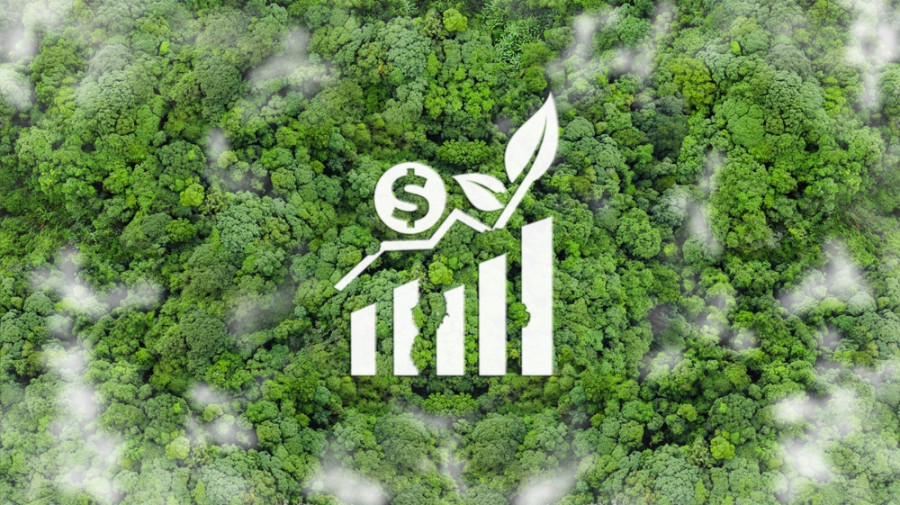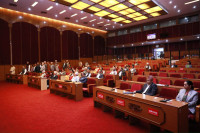Columns
Nepal’s carbon market potential
Although political will and foundational institutions exist, our success depends on quick, strategic action.
Subash Pandey & Craig Stock
One of the most significant outcomes of COP29 in Baku, Azerbaijan, was the near completion of Article 6, a key provision of the Paris Agreement (PA) that facilitates international carbon trading and cooperation. This mechanism is divided into three key components: Article 6.2, which enables bilateral or multilateral carbon trading through Internationally Transferred Mitigation Outcomes (ITMOs); Article 6.4, which establishes a UN-regulated carbon market similar to the Clean Development Mechanism (CDM) where emissions reduction projects can generate and trade credits; and Article 6.8, which promotes non-market-based cooperation such as technology transfers and policy coordination to support global emissions reductions.
The long-awaited Article 6 rulebook, which took nearly a decade to finalise, has now set clear regulations on authorisation, accounting and market mechanisms, paving the way for the expansion of carbon trading. With this clarity, the global carbon market is poised for rapid growth. A significant milestone in early 2024 was when Switzerland completed the first Article 6.2 trade, purchasing 2,000 tonnes of emissions reductions from Thailand’s electric bus initiative at over $30 per tonne. This transaction signals a turning point, encouraging countries worldwide to invest in governance structures and carbon accounting systems to unlock climate finance opportunities.
Growing demand for carbon credits
Countries are investing heavily in developing their capacity to sell Article 6 credits, as the market has the potential to be highly lucrative. By 2030, the demand is projected to reach $100 billion, a significant leap from the current voluntary carbon market, which stands at roughly $1 billion per year.
This rising demand is fueled by four key sources. Corporate compliance with carbon tax regulations drives companies to purchase credits from abroad to offset tax obligations, such as Singaporean companies buying Nepali credits, although no formal agreement between the two governments exists yet. National compliance with Nationally Determined Contributions requires countries to acquire credits to fulfil their climate targets, as seen in Switzerland’s credit purchase from Thailand. Voluntary net-zero commitments push corporations to purchase credits to meet sustainability goals while ensuring transparency and preventing double-counting.
Demand for these credits is growing faster than supply, with the Carbon Offsetting and Reduction Scheme for International Aviation (CORSIA) playing a significant role. CORSIA is a global scheme requiring airlines to offset emissions from international flights, which are not regulated under the Paris Agreement. It also mandates airlines to buy credits to offset emissions from international flights under the UN’s compliance market. As airline emissions continue to rise, the demand for carbon credits under CORSIA is expected to reach 137 million tonnes, with current credit prices ranging from $20 to $25 per tonne.
However, supply remains low due to two key barriers: The previously uncertain Article 6 rules before COP29 in Baku and the technical complexities involved in adjusting national carbon accounting structures.
Carbon trading
Until recently, Nepal’s laws recognised the trade of carbon credits only under the Clean Development Mechanism of the Kyoto Protocol. However, Nepal has now proposed an amendment to its Environmental Protection Regulation 2022 to enable participation in Article 6 of the PA. This marks Nepal’s first legal step towards leveraging carbon credit trading in the global market under the PA. Once Article 6 is operationalised, it will pave the way for private sector participation, allowing project developers to design and trade mitigation activities internationally.
Article 6 allows Nepal to advance its low-carbon sustainable development goals while contributing to global climate objectives. In recent years, Nepal has demonstrated its commitment to Article 6 by signing bilateral agreements, participating in capacity-building initiatives and establishing a Designated National Authority (DNA). However, these initial steps alone are insufficient for success. While expressing interest and setting up frameworks are important, true progress hinges on effectively implementing laws and policies—where Nepal has historically struggled.
Nepal’s second NDC, submitted to the UNFCCC in 2020, briefly mentioned its intention to use voluntary cooperation under Article 6 to achieve climate goals. However, the goals lack specificity. Nepal is updating its NDC to include climate targets through 2035, providing an opportunity to strategically identify sectors for carbon trading under voluntary cooperation or compliance markets using ITMOs. Balancing market types ensures carbon trading aligns with national climate goals.
To trade correspondingly adjusted credits, Nepal must install a rigorous MRV system that produces trustworthy, cross-sector greenhouse gas data; boost its capacity to submit biennial transparency reports to the UNFCCC, which will soon be compulsory; and create a national registry that logs every mitigation project to prevent overselling and double-counting. If in-country resources are insufficient, Nepal should secure technical and financial assistance from bilateral or multilateral partners.
Institutional strengthening
The Climate Change Management Division (CCMD) in the Ministry of Forests and Environment, Nepal’s Article 6 and UNFCCC focal point, must prioritise the carbon market’s agenda by running complete gap-assessment in Article 6 participation, setting a government-wide framework that assigns clear Article 6 roles to each ministry and agency, quantifying administrative and operational costs and securing funding and guiding other relevant ministries on pricing mitigation outcomes.
Nepal’s Article 6 framework is still taking shape, but it can move faster by following peers such as Ghana. In Ghana, the Environmental Protection Agency acts as the Designated National Authority. A separate Carbon Market Office manages day-to-day tasks, including policy enforcement, MRV, registry upkeep, Internationally Transferred Mitigation Outcomes issuance and transfer, reporting and corresponding adjustments. These functions are overseen by a Carbon Market Committee and supported by a Technical Advisory Committee.
Beyond copying structures, Nepal must replicate the driver of Ghana’s success: stable political and bureaucratic leadership. Officials leading Article 6 should hold four to five-year terms aligned with UNFCCC processes and MRV cycles. With decisive leadership and swift reforms, Nepal can gain an early-mover edge, especially in high-demand compliance, by meeting the criteria for trading correspondingly adjusted credits.
Conclusion
Failure to act now risks Nepal missing out on climate finance that could support its energy transition, forest conservation and sustainable development goals. Competing nations are already advancing in Article 6, securing early bilateral deals and investments. Without the necessary institutional and regulatory reforms, Nepal could struggle to meet its own climate targets and lose its potential revenue streams.
Conversely, positioning Nepal as an early leader in Article 6 implementation would bring significant benefits. It would attract investment, create jobs, and elevate Nepal’s standing in global climate diplomacy. By ensuring high-integrity transactions, Nepal can reinforce its commitment to sustainable development and establish itself as a trusted supplier of Article 6 credits.
Nepal has the political will and foundational institutions to succeed in carbon markets, but success depends on quick and strategic action. Nepal has the potential to transition from being a passive observer to an active participant in the global carbon economy, unlocking economic and environmental benefits for the nation. Delaying readiness efforts could mean missing the opportunity to leverage one of the most promising mechanisms for climate finance in the coming decade.




 13.12°C Kathmandu
13.12°C Kathmandu
















